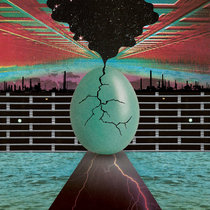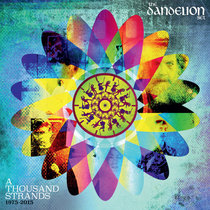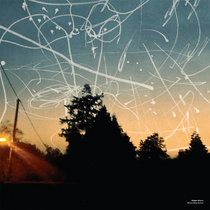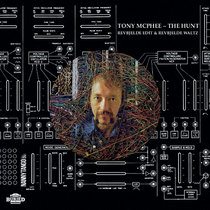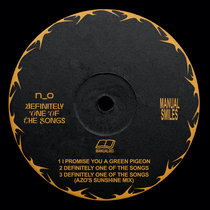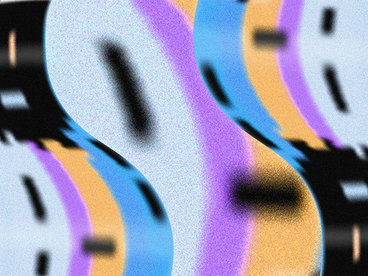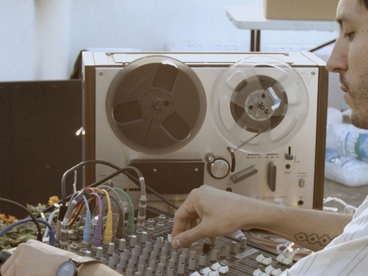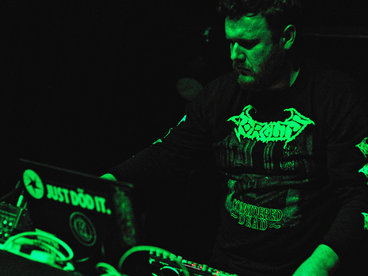
That Cursed Armored Train
from That Cursed Armored Train by Giant Sighs
about
Essay:
How is the nature of musical time approached by different musical cultures and movements? How has the ordering of tonal and rhythmical events in music developed, throughout the last century? Crucially, how are different themes in musical works emphasised over time in order to evoke different emotions and meanings? And finally; what are the implications and effects of emerging technologies on new musical time? This essay will attempt to address these questions, and provide a greater understanding of how time can be employed in composition, both electroacoustic and acoustical. The nature of sound recording and the influence of technology, through processes such as time displacement, and temporal manipulation of human musical gestures (dilation/expansion, convolution, granular synthesis and signal processing of time/frequency domains) on the compositional process will be considered. Drawing from a body of research by Leonard Meyer, David Toop, Stockhausen and Katharine Norman discussing qualitative musical time, listening states and narrative form, as well as academic journals including Organised Sound and the Journal of New Musical Research addressing topics such as the effects of melodic/rhythmic complexity on performance context and the importance of structure in electroacoustic composition. The primary fields of investigation and discussion are as follows; The project will begin with an exploration of proposed forms of listening to sound including considerations of event concentration, ‘storytelling’ through referential or reflective listening, the effect of tempo on structural experience and, investigating the effects of duration on musical meaning and emotion. The next subject area will discuss new technologies in the context of time displacement and augmentation, considering a paper on Stockhausen’s ‘New Morphology of Musical Time’ in light of new developments in music technology. Also, an address of the modernist tendency toward structure-centric computer music culture and the balance between objective hierarchies of time structures and a listeners’ interpretation of a pieces’ meaning. Having introduced a number of digital technologies and considered their implications for manipulation of musical time, this paper will then describe how musical material both in digital and analogue realms can be arranged and augmented. Common techniques include processes such as repetition, manipulation, composing through numerical series and sets, as well as the varying hierarchical structures in which such material can be ordered. The relationships between these musical objects will also be researched in order to establish how they can be identified and exploited. Finally, an investigation of a variety of different musical cultures and their use of rhythm and tempo will provide a wider critical context within which the piece accompanying this paper can be placed. Techniques and styles of western electroacoustic composers, as well as South Indian classical Raga, African Pygmy music, Didgeridoo music and Javanese Gamelan will be analysed and presented with consideration of the approaches and beliefs behind the compositions to further inform the compositional understanding of the author and provide greater repertoire in the fields of motivic development and temporal arrangement.
One of the most important factors to consider when composing music to affect a listeners’ mood, is that of how the music will be received and what it will induce in the listener upon reception. A number of techniques can be employed in order to introduce specific forms into the music as desired by the composer, generally relating to the continuity of sound objects and their complexity or frequency. For instance, a gradual introduction of simple bird sounds abruptly replaced by digital noise will understandably not show a natural progression and so be unexpected by a listener, leaving them unsure of what further to expect. Whether working with real-world sound sources or purely electronic ones, the high-level form of a work is always of notable importance, and it is usually this form which distinguishes between various styles of composition. When considering how a track should be heard, one must consider the ambience it suggests as well as the progression, its’ contours and the internal relationships between different moments in the piece. The prominent Western classical musicologist and music analyst Leonard Meyer describes ways to identify these relationships through, among other things, a consideration of the principles of gestalt psychology in his book ‘Emotion and Meaning in Music’. Meyer states, “As we listen…we organize our expectations both in terms of the past of that particular work…and…our memories of earlier relevant musical experiences”. Chiefly, it is playing with expectation that serves as the most useful device for composers, methods such as establishing a theme then manipulating it are common to many different kinds of music. Meyer says of this, in relation to more traditional Western forms, “a very marked figure may…give rise to saturation if it is repeated with great enough insistence…the longer a pattern or process persists, the stronger the expectation of change”.
The Concentration of Events
For inducing specific listening approaches to a composition through propagation of particular ambience, it is important to consider the effects of tempo, slow-tempo music has been found to produce significantly enhanced relaxation and expectation compared to faster rhythmic groupings. Equally, when initialising a variety of emotional responses within a piece of music, a very short amount of time is required in order to generate a response to different moods. This allows us to consider more extensively the possibilities for continuous and intricate compositions employing a variety of emotional and thematic references. In his discussions of duration in the book ‘Ocean of Sound’, David Toop quotes a passage from Cage’s ‘Silence’. During a session listening to a Buddhist service, one participant stood up and requested the music to be stopped, citing irritation and tedium, whereas a different individual expressed disappointment when the tape was stopped, saying “I was just getting interested”. This excerpt does well to emphasise the wildly varied perceptions listeners’ can have of the duration of a piece, and offers insight into how extended compositions should be approached in terms of their duration. However long they may be, the piece will not be to everyone’s taste, and the duration should be a direct attribute of the form and nature of the piece, be it explorational, formulaic, or otherwise. Sachs’ Rhythm and Tempo establishes a description of different forms of musical rhythm between separate cultures as being closely related to the ‘divisive’ nature of most human activities; most notably the stride, the breath and the regularity of tension and relaxation of muscles. This observation is important in establishing the principles of the ways we listen to music. We usually expect a concentration of events somewhat in proportion to our natural bodily rhythms. Returning to Meyer, we see his views of the continuation law of Gestalt theory offers good insight into how a piece can be kept uniform, in order to linearise its form; “the more all the parameters are duplicated in model and variant, the stronger the conformant relationship” Meyer states here that most important in these parameters, are the fundamentals of pitch, duration and harmony. We also see how this direct formal structure can be ornamented through subtle alterations to the lower-level; “secondary parameters, such as dynamics, register, and timbre, help to disguise what might otherwise have been a rather obvious conformant relationship”. It is noted here that in reiterating musical material, composers can choose between repeating(i.e. straight looping) and returning to a phrase, after exploring other material. It is important however to not deviate too far from the context, as if a listener cannot properly remember a core phrase, it cannot be recognised as a return. Meyer also suggests a motivation for the development of common structures in sonatas, emphasising the importance of common restraints in a work; “bridge passages and development in sonata-form tend to be motivically stable: motivic constancy allows the listener to focus upon and comprehend the harmonic and textural processes which are central.”. This idea of a central theme, in order to avoid the danger of allowing a composition to become either ‘saturated’ or chaotic, leads naturally to methods of composition involving more thematic development. “[T]he germination of a large work from a single motivic cell in a kind of miniature evolution…would not only create audible coherence but would all but guarantee musical unity.”. This is a clear indication of why some composers issue themselves restraints in order to keep their works coherent and continuous. One can generally identify a series of formal structures on all levels of a reasonably complex composition, even though the highest level organisations are chief determinants of a pieces’ classification. A good example of how expectations of time can be manipulated appears in the use of propagation at high levels of compositional form; “because the highest level is additive, rather than processive, the series lacks an internally structured point of probable termination”. Often, the views of more traditional Western music analysts follow the line that form and structure in contemporary, avant-garde composition places too great a demand on the listeners’ immediate powers of analysis. This, they say, makes such music difficult to understand and comprehend. Meyer states, “Nonhierarchic music-that of John Cage, for instance-moves, like the ocean, in undulating or sporadic waves of activity in which we attend to, but can scarcely remember, the particular events.” Meyer then goes on to quote Herbert A. Simon in concerning the dangers of overcomplexity as a whole; “If there are important systems in the world that are complex without being hierarchic…analysis of their behaviour…would be beyond our capacities of memory or computation.” This, understandably so, presents minimalist and other avant-garde compositional approaches as both difficult to comprehend structurally in comparison to Western classical music, and equally easier to approach in terms of their interpretations of the nature of musical time.
Time Displacement
Toop cites an interesting observation by minimalist composer La Monte Young, again highlighting the close relationship between the functions of musical time, and universal rhythmical operations; “Time is depending on night and day, the periodic rotations of the planets, the stars, the periodic functions of our bodies and the seasons, all of these various periodic events, and without them we really have no concept of time.”. A number of interesting research projects have been carried out recently, investigating the nature of the relationship between musical structure and emotional response, some of these studies come to suggest that such responses rely equally on both the musical form or structure, and the listener’s own background and musical knowledge.
The freedom afforded by new recording technologies in processing music allows for new methods of composition irrespective of time or place. In a simple example of a record produced with soloists recorded first and backing added later, we see how such pieces can open up new opportunities, but also create peculiar musical consequences; “We listen to a paradox: the soloists seem to improvise spontaneously to a pattern that we have just heard!”. A common aspect of Kramers’ writing in ‘The Time of Music’ relates to what he calls ‘absolute time’, that is, the primary form of time that is inescapable and wholly constant. He praises music’s ability to remove us from this, and in its creation and permutations of new forms of time. Musical form is described as an earlier-simultaneous-later arrangement, and is contrasted to that of an inferred ‘gestural time’, involving the more morphological past-present-future form.. Nineteenth and early twentieth century composition involved such complexity that composers had to wait vast amounts of time before hearing their work. Through technology, composers are able to hear the ‘potentially finished product’ immediately. New music technology, according to Kramer; “increased [composer’s] power to regulate temporal proportions…and it has opened up the compositional process to an immediacy.”
Also, with new opportunities for performance separate from the flaws of the human performer, and this ability to more immediately assess and feedback the compositional process, we can almost expect a statement like “Technology has liberated listeners from the completeness of musical form. Is it any surprise that some recent composers have cultivated aesthetics such as moment time or vertical time that deny closure?”. We see how moment time developed as a form apart from that of Stockhausen, Stravinsky’s sonata form “adopted the outlines of forms that originally dealt with motion…used…as static…self contained sections.”. Equally, “subtle systems of proportions…discontinuities and mosaic-like forms”. are identified in the music of Debussy, Stravinsky, and BartÚk. The advent of recording is also noted to have had a profound effect on aspects of musical duration and ‘redundancy’. This can certainly be seen as a factor in the beginnings of moment/vertical time, where the form moved further and further into a static representation. Here we see the moment form verticalise time within sections, “render every moment a present, avoid functional implications between moments, and avoid climaxes.”
In moment time, there are a number of different approaches to the performance process also, which directly affect the form of the piece, often we see that “The thread of discourse of contemporary compositions is broken off as unrelated events pass by, only to be picked up later.” In Stockhausen’s Zyklus, “motion is circular and may begin anywhere on the circle”. Momente “includes brief references to what may be the past in one performance but the future in another”. Also, Boulez’s Third Piano Sonata is said to repeatedly alter the “realization of but not the logic of the serial structure”. All these aspects play heavily on the emergent structures that we recognize in the music, and the perceived time as we pass through it.
Kramer offers a number of criticisms to the theory of pure moment time however, claiming impracticability and common subversion; “Great artistry and craft are needed to make purposefully ordered events seem random, even when they repeat earlier events.” Also noted is the lack of structural impetus for development and expectation. Without knowledge of whether the next development will contain new material or re-visit old, the listener does not feel a particular desire for either. Referring more closely to subversion of the principles of moment time, Kramer notes a piece where, in drawing the ‘continuum’ of the moment composition to a close, Messiaen’s Turangalila, “a more discontinuous work, undermines its moment time and ends paradoxically with greater closure than does Stravinsky’s Symphonies”.
The form of these new experimental approaches to time has been linked to much older, traditional compositions in its juxtaposition of individual parts of a composition for successive development. Kramer highlights similarities; “Ethnomusicologist Ruth Stone has found in Kpelle music from West African structures that resemble Western vertical and/or moment time”. In these performances, the more dramatic elements of the narrative arc are often downplayed, blunting progression and opening up opportunities for sudden horizontal elaborations. The following statement truly relates to both the affect of recording technologies on new musical form, and the subsequent reception by audience and evolutions of listening modes. Toop discusses here the development of dance music and how cut n’ paste culture altered musical listening; “disco began to work on the principle of decomposing songs into modular and interchangeable fragments, sliced and repatched into [a new] order [which] was designed to suit the nocturnal rhythms of a participatory, ecstatic audience, rather than any model of consensual, concise, classic proportions demanded by pop listeners.”. The actual technique of DJ’ing affords a more wide-open approach to musical material, also; “splicing techniques…allow for the composition of absolute durations independent of the music that fills them.”. Likewise, Brian Eno developed a unique method of composition through subjugating his audience’s time perceptions. Discussing his approach to ‘Music for Airports’, Eno emphasises the ambiguity and distance he aims for; “Ambient music must be able to accommodate many levels of listening without enforcing one in particular; it must be as ignorable as it is interesting.”. On the nature of escapism through musical time, Kramer states that Beethoven’s music offers “a temporal experience with tempos and rhythms quite different from those of daily life.”. Escapism is important in this context because it highlights many aspects of genres such as muzak, trance and a large degree of minimalism where the aim is to establish a disassociated state between the listener and the performance. Toop also refers to the author Philip K. Dick in discussing the preoccupation between immersive ambience and escape; referring to a new musical instrument functioning through brainwaves, a character notes “There’s nothing creative about it. True, you can hit on new configurations…produce entirely new emotions in your head which would never otherwise show up there…But that’s not music. That’s escape. Who wants it?”
Manipulation of gesture
Meyer asserts two key aspects of expectation in music in his text ‘Emotion and meaning in music’; These are that “repetition, though it exists may exist physically, never exists psychologically”, and also that “the repetition or seeming repetition of a part arouses more specific expectations than the first statement of the part…the less complete the part, the weaker the probability of relations between those terms already established and any future parts”. Meyer offers insight into effective and widely used methods for heightening or diminishing expectations and how listeners’ are often encouraged to engage in music more 9actively; stating that, “departures from or delays in the normally expected course of musical events will be most effective where that course is most specifically and precisely envisaged, deviations will be most effective where the pattern is most complete.”. Considering the fundamentals of Gestalt principle, Meyer highlights an important factor which places a connection between composing music which is deliberately complex, and the satisfaction of accomplished expectation. Establishing that, most often, temporally connected musical figures in a piece do not relate to each other satisfactorily, in terms of style or continuity. In discussing the development of styles and form in Western classical music, Meyer paraphrases Bertrand Russell in order to highlight the question of how these emergent forms come about: “Understanding music is not a matter of dictionary definitions, of knowing this, that, or the other rule of musical syntax and grammar, rather it is a matter of habits correctly acquired in one’s self and properly presumed in the particul
How is the nature of musical time approached by different musical cultures and movements? How has the ordering of tonal and rhythmical events in music developed, throughout the last century? Crucially, how are different themes in musical works emphasised over time in order to evoke different emotions and meanings? And finally; what are the implications and effects of emerging technologies on new musical time? This essay will attempt to address these questions, and provide a greater understanding of how time can be employed in composition, both electroacoustic and acoustical. The nature of sound recording and the influence of technology, through processes such as time displacement, and temporal manipulation of human musical gestures (dilation/expansion, convolution, granular synthesis and signal processing of time/frequency domains) on the compositional process will be considered. Drawing from a body of research by Leonard Meyer, David Toop, Stockhausen and Katharine Norman discussing qualitative musical time, listening states and narrative form, as well as academic journals including Organised Sound and the Journal of New Musical Research addressing topics such as the effects of melodic/rhythmic complexity on performance context and the importance of structure in electroacoustic composition. The primary fields of investigation and discussion are as follows; The project will begin with an exploration of proposed forms of listening to sound including considerations of event concentration, ‘storytelling’ through referential or reflective listening, the effect of tempo on structural experience and, investigating the effects of duration on musical meaning and emotion. The next subject area will discuss new technologies in the context of time displacement and augmentation, considering a paper on Stockhausen’s ‘New Morphology of Musical Time’ in light of new developments in music technology. Also, an address of the modernist tendency toward structure-centric computer music culture and the balance between objective hierarchies of time structures and a listeners’ interpretation of a pieces’ meaning. Having introduced a number of digital technologies and considered their implications for manipulation of musical time, this paper will then describe how musical material both in digital and analogue realms can be arranged and augmented. Common techniques include processes such as repetition, manipulation, composing through numerical series and sets, as well as the varying hierarchical structures in which such material can be ordered. The relationships between these musical objects will also be researched in order to establish how they can be identified and exploited. Finally, an investigation of a variety of different musical cultures and their use of rhythm and tempo will provide a wider critical context within which the piece accompanying this paper can be placed. Techniques and styles of western electroacoustic composers, as well as South Indian classical Raga, African Pygmy music, Didgeridoo music and Javanese Gamelan will be analysed and presented with consideration of the approaches and beliefs behind the compositions to further inform the compositional understanding of the author and provide greater repertoire in the fields of motivic development and temporal arrangement.
One of the most important factors to consider when composing music to affect a listeners’ mood, is that of how the music will be received and what it will induce in the listener upon reception. A number of techniques can be employed in order to introduce specific forms into the music as desired by the composer, generally relating to the continuity of sound objects and their complexity or frequency. For instance, a gradual introduction of simple bird sounds abruptly replaced by digital noise will understandably not show a natural progression and so be unexpected by a listener, leaving them unsure of what further to expect. Whether working with real-world sound sources or purely electronic ones, the high-level form of a work is always of notable importance, and it is usually this form which distinguishes between various styles of composition. When considering how a track should be heard, one must consider the ambience it suggests as well as the progression, its’ contours and the internal relationships between different moments in the piece. The prominent Western classical musicologist and music analyst Leonard Meyer describes ways to identify these relationships through, among other things, a consideration of the principles of gestalt psychology in his book ‘Emotion and Meaning in Music’. Meyer states, “As we listen…we organize our expectations both in terms of the past of that particular work…and…our memories of earlier relevant musical experiences”. Chiefly, it is playing with expectation that serves as the most useful device for composers, methods such as establishing a theme then manipulating it are common to many different kinds of music. Meyer says of this, in relation to more traditional Western forms, “a very marked figure may…give rise to saturation if it is repeated with great enough insistence…the longer a pattern or process persists, the stronger the expectation of change”.
The Concentration of Events
For inducing specific listening approaches to a composition through propagation of particular ambience, it is important to consider the effects of tempo, slow-tempo music has been found to produce significantly enhanced relaxation and expectation compared to faster rhythmic groupings. Equally, when initialising a variety of emotional responses within a piece of music, a very short amount of time is required in order to generate a response to different moods. This allows us to consider more extensively the possibilities for continuous and intricate compositions employing a variety of emotional and thematic references. In his discussions of duration in the book ‘Ocean of Sound’, David Toop quotes a passage from Cage’s ‘Silence’. During a session listening to a Buddhist service, one participant stood up and requested the music to be stopped, citing irritation and tedium, whereas a different individual expressed disappointment when the tape was stopped, saying “I was just getting interested”. This excerpt does well to emphasise the wildly varied perceptions listeners’ can have of the duration of a piece, and offers insight into how extended compositions should be approached in terms of their duration. However long they may be, the piece will not be to everyone’s taste, and the duration should be a direct attribute of the form and nature of the piece, be it explorational, formulaic, or otherwise. Sachs’ Rhythm and Tempo establishes a description of different forms of musical rhythm between separate cultures as being closely related to the ‘divisive’ nature of most human activities; most notably the stride, the breath and the regularity of tension and relaxation of muscles. This observation is important in establishing the principles of the ways we listen to music. We usually expect a concentration of events somewhat in proportion to our natural bodily rhythms. Returning to Meyer, we see his views of the continuation law of Gestalt theory offers good insight into how a piece can be kept uniform, in order to linearise its form; “the more all the parameters are duplicated in model and variant, the stronger the conformant relationship” Meyer states here that most important in these parameters, are the fundamentals of pitch, duration and harmony. We also see how this direct formal structure can be ornamented through subtle alterations to the lower-level; “secondary parameters, such as dynamics, register, and timbre, help to disguise what might otherwise have been a rather obvious conformant relationship”. It is noted here that in reiterating musical material, composers can choose between repeating(i.e. straight looping) and returning to a phrase, after exploring other material. It is important however to not deviate too far from the context, as if a listener cannot properly remember a core phrase, it cannot be recognised as a return. Meyer also suggests a motivation for the development of common structures in sonatas, emphasising the importance of common restraints in a work; “bridge passages and development in sonata-form tend to be motivically stable: motivic constancy allows the listener to focus upon and comprehend the harmonic and textural processes which are central.”. This idea of a central theme, in order to avoid the danger of allowing a composition to become either ‘saturated’ or chaotic, leads naturally to methods of composition involving more thematic development. “[T]he germination of a large work from a single motivic cell in a kind of miniature evolution…would not only create audible coherence but would all but guarantee musical unity.”. This is a clear indication of why some composers issue themselves restraints in order to keep their works coherent and continuous. One can generally identify a series of formal structures on all levels of a reasonably complex composition, even though the highest level organisations are chief determinants of a pieces’ classification. A good example of how expectations of time can be manipulated appears in the use of propagation at high levels of compositional form; “because the highest level is additive, rather than processive, the series lacks an internally structured point of probable termination”. Often, the views of more traditional Western music analysts follow the line that form and structure in contemporary, avant-garde composition places too great a demand on the listeners’ immediate powers of analysis. This, they say, makes such music difficult to understand and comprehend. Meyer states, “Nonhierarchic music-that of John Cage, for instance-moves, like the ocean, in undulating or sporadic waves of activity in which we attend to, but can scarcely remember, the particular events.” Meyer then goes on to quote Herbert A. Simon in concerning the dangers of overcomplexity as a whole; “If there are important systems in the world that are complex without being hierarchic…analysis of their behaviour…would be beyond our capacities of memory or computation.” This, understandably so, presents minimalist and other avant-garde compositional approaches as both difficult to comprehend structurally in comparison to Western classical music, and equally easier to approach in terms of their interpretations of the nature of musical time.
Time Displacement
Toop cites an interesting observation by minimalist composer La Monte Young, again highlighting the close relationship between the functions of musical time, and universal rhythmical operations; “Time is depending on night and day, the periodic rotations of the planets, the stars, the periodic functions of our bodies and the seasons, all of these various periodic events, and without them we really have no concept of time.”. A number of interesting research projects have been carried out recently, investigating the nature of the relationship between musical structure and emotional response, some of these studies come to suggest that such responses rely equally on both the musical form or structure, and the listener’s own background and musical knowledge.
The freedom afforded by new recording technologies in processing music allows for new methods of composition irrespective of time or place. In a simple example of a record produced with soloists recorded first and backing added later, we see how such pieces can open up new opportunities, but also create peculiar musical consequences; “We listen to a paradox: the soloists seem to improvise spontaneously to a pattern that we have just heard!”. A common aspect of Kramers’ writing in ‘The Time of Music’ relates to what he calls ‘absolute time’, that is, the primary form of time that is inescapable and wholly constant. He praises music’s ability to remove us from this, and in its creation and permutations of new forms of time. Musical form is described as an earlier-simultaneous-later arrangement, and is contrasted to that of an inferred ‘gestural time’, involving the more morphological past-present-future form.. Nineteenth and early twentieth century composition involved such complexity that composers had to wait vast amounts of time before hearing their work. Through technology, composers are able to hear the ‘potentially finished product’ immediately. New music technology, according to Kramer; “increased [composer’s] power to regulate temporal proportions…and it has opened up the compositional process to an immediacy.”
Also, with new opportunities for performance separate from the flaws of the human performer, and this ability to more immediately assess and feedback the compositional process, we can almost expect a statement like “Technology has liberated listeners from the completeness of musical form. Is it any surprise that some recent composers have cultivated aesthetics such as moment time or vertical time that deny closure?”. We see how moment time developed as a form apart from that of Stockhausen, Stravinsky’s sonata form “adopted the outlines of forms that originally dealt with motion…used…as static…self contained sections.”. Equally, “subtle systems of proportions…discontinuities and mosaic-like forms”. are identified in the music of Debussy, Stravinsky, and BartÚk. The advent of recording is also noted to have had a profound effect on aspects of musical duration and ‘redundancy’. This can certainly be seen as a factor in the beginnings of moment/vertical time, where the form moved further and further into a static representation. Here we see the moment form verticalise time within sections, “render every moment a present, avoid functional implications between moments, and avoid climaxes.”
In moment time, there are a number of different approaches to the performance process also, which directly affect the form of the piece, often we see that “The thread of discourse of contemporary compositions is broken off as unrelated events pass by, only to be picked up later.” In Stockhausen’s Zyklus, “motion is circular and may begin anywhere on the circle”. Momente “includes brief references to what may be the past in one performance but the future in another”. Also, Boulez’s Third Piano Sonata is said to repeatedly alter the “realization of but not the logic of the serial structure”. All these aspects play heavily on the emergent structures that we recognize in the music, and the perceived time as we pass through it.
Kramer offers a number of criticisms to the theory of pure moment time however, claiming impracticability and common subversion; “Great artistry and craft are needed to make purposefully ordered events seem random, even when they repeat earlier events.” Also noted is the lack of structural impetus for development and expectation. Without knowledge of whether the next development will contain new material or re-visit old, the listener does not feel a particular desire for either. Referring more closely to subversion of the principles of moment time, Kramer notes a piece where, in drawing the ‘continuum’ of the moment composition to a close, Messiaen’s Turangalila, “a more discontinuous work, undermines its moment time and ends paradoxically with greater closure than does Stravinsky’s Symphonies”.
The form of these new experimental approaches to time has been linked to much older, traditional compositions in its juxtaposition of individual parts of a composition for successive development. Kramer highlights similarities; “Ethnomusicologist Ruth Stone has found in Kpelle music from West African structures that resemble Western vertical and/or moment time”. In these performances, the more dramatic elements of the narrative arc are often downplayed, blunting progression and opening up opportunities for sudden horizontal elaborations. The following statement truly relates to both the affect of recording technologies on new musical form, and the subsequent reception by audience and evolutions of listening modes. Toop discusses here the development of dance music and how cut n’ paste culture altered musical listening; “disco began to work on the principle of decomposing songs into modular and interchangeable fragments, sliced and repatched into [a new] order [which] was designed to suit the nocturnal rhythms of a participatory, ecstatic audience, rather than any model of consensual, concise, classic proportions demanded by pop listeners.”. The actual technique of DJ’ing affords a more wide-open approach to musical material, also; “splicing techniques…allow for the composition of absolute durations independent of the music that fills them.”. Likewise, Brian Eno developed a unique method of composition through subjugating his audience’s time perceptions. Discussing his approach to ‘Music for Airports’, Eno emphasises the ambiguity and distance he aims for; “Ambient music must be able to accommodate many levels of listening without enforcing one in particular; it must be as ignorable as it is interesting.”. On the nature of escapism through musical time, Kramer states that Beethoven’s music offers “a temporal experience with tempos and rhythms quite different from those of daily life.”. Escapism is important in this context because it highlights many aspects of genres such as muzak, trance and a large degree of minimalism where the aim is to establish a disassociated state between the listener and the performance. Toop also refers to the author Philip K. Dick in discussing the preoccupation between immersive ambience and escape; referring to a new musical instrument functioning through brainwaves, a character notes “There’s nothing creative about it. True, you can hit on new configurations…produce entirely new emotions in your head which would never otherwise show up there…But that’s not music. That’s escape. Who wants it?”
Manipulation of gesture
Meyer asserts two key aspects of expectation in music in his text ‘Emotion and meaning in music’; These are that “repetition, though it exists may exist physically, never exists psychologically”, and also that “the repetition or seeming repetition of a part arouses more specific expectations than the first statement of the part…the less complete the part, the weaker the probability of relations between those terms already established and any future parts”. Meyer offers insight into effective and widely used methods for heightening or diminishing expectations and how listeners’ are often encouraged to engage in music more 9actively; stating that, “departures from or delays in the normally expected course of musical events will be most effective where that course is most specifically and precisely envisaged, deviations will be most effective where the pattern is most complete.”. Considering the fundamentals of Gestalt principle, Meyer highlights an important factor which places a connection between composing music which is deliberately complex, and the satisfaction of accomplished expectation. Establishing that, most often, temporally connected musical figures in a piece do not relate to each other satisfactorily, in terms of style or continuity. In discussing the development of styles and form in Western classical music, Meyer paraphrases Bertrand Russell in order to highlight the question of how these emergent forms come about: “Understanding music is not a matter of dictionary definitions, of knowing this, that, or the other rule of musical syntax and grammar, rather it is a matter of habits correctly acquired in one’s self and properly presumed in the particul
lyrics
Lyrics:
OK.
OK.
credits
from That Cursed Armored Train,
released October 15, 2007
Credits:
Joseph Mounsey - Essay, Production, Keyboards & Synthesisers, Electric & Acoustic Guitars, Electribe-MX1
Matthew Mounsey - Additional direction
Benjamin 'Binbag Skinbag' Pemberton - Toaster, Frying Pan, Microwave, Cutlery
Credits:
Joseph Mounsey - Essay, Production, Keyboards & Synthesisers, Electric & Acoustic Guitars, Electribe-MX1
Matthew Mounsey - Additional direction
Benjamin 'Binbag Skinbag' Pemberton - Toaster, Frying Pan, Microwave, Cutlery
license
tags
about
Giant Sighs Antarctica
t.ly/gLAx for donations
contact / help
If you like Giant Sighs, you may also like:















